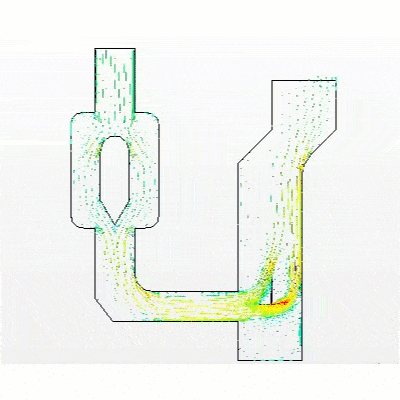Improve the ease of use for Marine cases using linked VOF Waves! The simulation of sea keeping is an essential tool for the marine industry, used to predict the behavior and performance of a vessel in various sea conditions. In Simcenter STAR-CCM+ we have various wave models and can easily switch boundary conditions. Let’s have a look on how to set up wave simulations and how you can switch between wave settings with linked VOF Waves.
Sea keeping simulations are critical for designing safe and efficient vessels that can withstand extreme weather conditions and perform optimally in a variety of sea states. By accurately simulating the motion and behavior of a vessel in different sea states, sea keeping simulations can help to optimize vessel design, reduce fuel consumption, and improve the overall performance of marine vessels. Common practice is to change wave type for runs of increasing complexity/fidelity.
VOF Waves
VOF waves provide a set of tools for providing boundary conditions and initial fields for marine and offshore simulations. In Simcenter STAR-CCM+ there are various wave types available, from simple first-order waves to more realistic wave shapes such as fifth-order or Cnoidal waves.
When initializing the fluid domain in a simulation a common method is to use field functions based on cell centroid location. Simcenter STAR-CCM+ has the convenient “InsidePart” field function operation as described in this article: Simcenter STAR-CCM+ field function syntax, part 3. However, if the fluid is initially at rest, or waves are initialized, under the influence of gravity, the VOF Waves model provides a better way of initializing. VOF Waves (flat or wavy) use in-built field functions like hydrostatic pressure which is useful for applying the correct hydrostatic pressure at pressure outlet boundaries.
Steady wave problem simulation of a first order wave compared with the analytical solution
For most coastal and ocean engineering applications, the concept of a steady wave problem where a wave train is assumed to be traveling at a constant speed without changing in shape or amplitude, is convenient with CFD simulations given reasonable computational resources. The wave train can be uniquely specified and solved in terms of three physical length scales: water depth, wavelength, and wave height. It is widely accepted selecting the appropriate wave model depending on the given wave steepness and water depth as proposed in the graph below. In Simcenter STAR-CCM+ we have waves based on the following theories at hand:
- Stokes theory
An explicit theory that is based on an assumption that the waves are not very steep. This theory is best suited to modeling waves in deeper water.
- Cnoidal theory
An explicit theory for modeling waves in more shallow water, where the wavelength is long compared to the water depth.

Realistic wave fields can also be obtained using the irregular wave model. An irregular wave can be used to describe a short-term sea state by a wave spectrum, that is, the power spectral density function of the vertical sea surface displacement. Estimates of reasonable values of significant wave height and average wave periods need to be provided. A Best Practice for simulations with irregular wave model is provided by SIEMENS here.
When setting up a VOF wave of a particular type, field functions are generated which can then be used for boundary conditions and initialization. This can be quite many different locations in your simulation. This is fine until you want to change to a different type of wave, for example from a first-order wave to a fifth-order wave. On generating a new wave, a new set of field functions are generated and the boundary conditions and initialization values have to then be switched over to these new field functions. This is a tedious process and potentially error prone. As it is common practice to change wave type for runs of increasing complexity/fidelity a better process is needed. For this purpose, we have added the linked wave type for VOF waves.

Linked VOF Wave
Linked waves act as a proxy or pointer for other waves. They also have a set of field functions that can be linked to boundary and initial conditions, so they can be used like any other wave type. The linked wave then acts as a pointer to another wave that you have previously set up. If you want to then change wave type, you can do so by simply changing the linked wave pointer to another wave without the need to change any other field functions/settings. As a result linked waves allow you to easily change between multiple waves in your set-up.

Summary
Overall, the simulation of sea keeping is a vital tool for the marine industry, providing valuable insights into the behavior and performance of vessels in different sea conditions. With the continued development of CFD techniques and computing power, sea keeping simulations are expected to become even more accurate and efficient, enabling naval architects and engineers to design safer and more efficient marine vessels for the future. We at Volupe hope that you find this explanation of the new feature useful for future projects to easily swap wave condition with more flexibility. Please let us know your thoughts, comments, and questions at support@volupe.com.
The Author
Florian Vesting, PhD
Contact: support@volupe.com
+46 768 51 23 46





